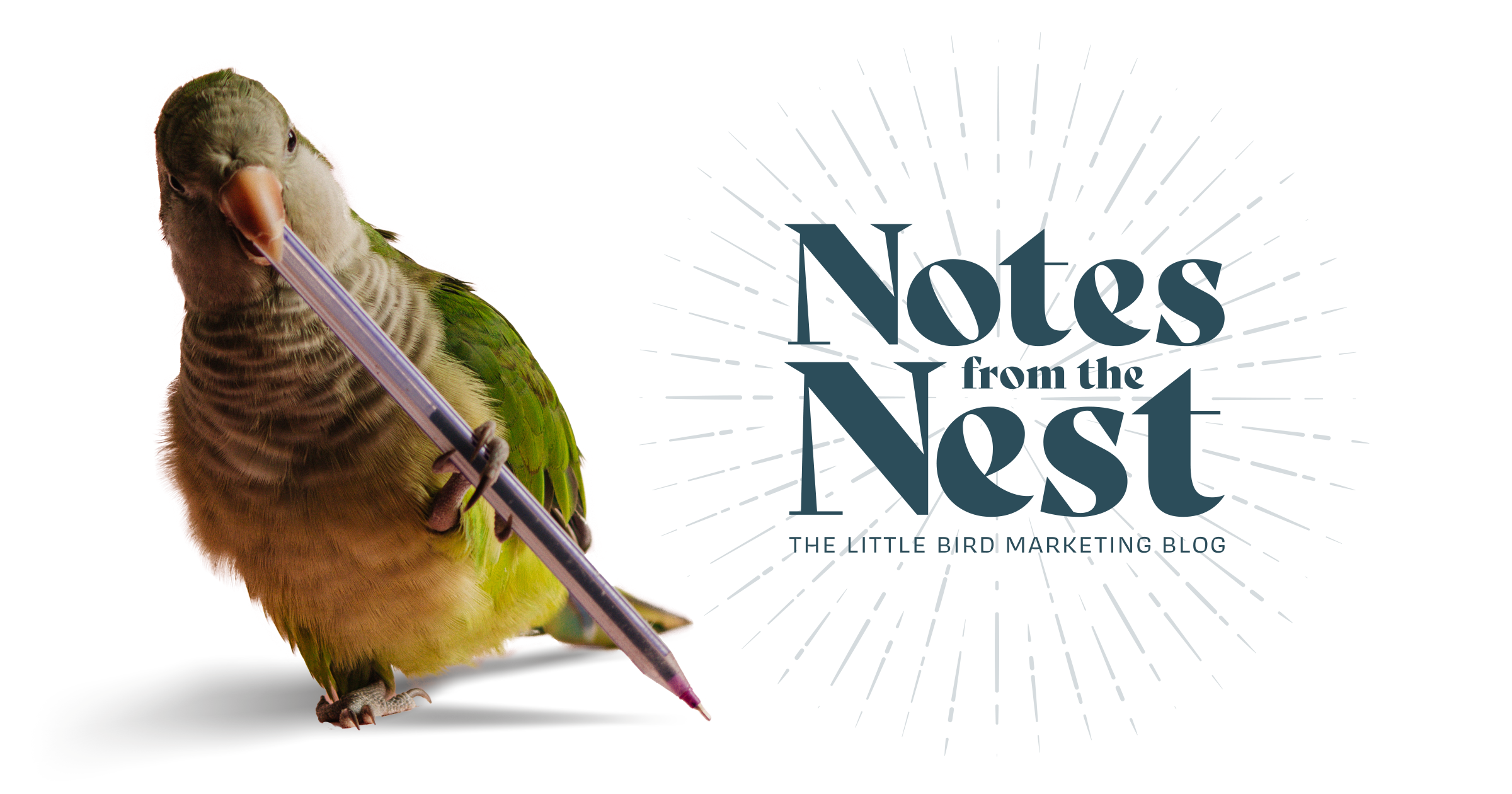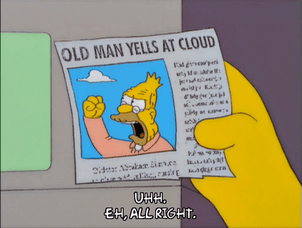Here’s how it happened. The new year started, and you opened LinkedIn on your phone and immediately saw an article that said something like, “Thinking of starting a new blog? Don’t bother.” And you read the article, which painted a pretty bleak picture of a crowded market and dwindling returns. The tiny Eeyore in your head sighed, and dejectedly asked you, “What’s the use?”

But here’s the thing: that article wasn’t for you. This article is for you.
It’s all about intentions. If your goal in blogging is to become Buzzfeed, then yeah, the odds are stacked against you. It is, indeed, a crowded market. But to blog - and blog well - is not a race to stardom. It’s just a conversation. The premise of that disheartening anti-blog New Year article is completely incorrect. It’s the equivalent of “Thinking of having a unique opinion? Don’t bother. Everyone else was already doing that two years ago.”
For businesses, blogs exist as part of the ongoing communication with potential customers and existing customers. They’re not vastly different from emails, in concept - one-sided communication that offers helpful information, exciting news, pointers or any other engaging content.
Want to kick down a few of those walls between you and your potential customers? Good! We’re gonna walk through a few important things you can do to improve every blog you create.
THE ENGAGING HEADLINE
First, let’s get a couple things straight. It doesn’t matter how good your blog is, if your headline stinks, nobody’s going to read it. As a population, we have a tendency to judge books by covers and blogs by headlines or titles. Fortunately, we have the benefit of lots and lots of data to help steer our headline strategy.
1. Best Headline Length
According to an extensive amount of information from our friends over at Hubspot, the sweet spot is somewhere between 6 and 13 words. From our personal experience, shorter is better.
2. Quantify, or Not?
Yes. People like to know exactly what they’re going to see before clicking. Telling someone their exact payoff in advance (and delivering!) is an extension of the empathetic marketing that we consistently tout. According to a study from Conductor, blog titles with numbers tend to perform best for increased click rates. (Ex: "Top 5," "4 Ways to...", etc.) Second and third place in that same list are titles that address the reader directly, and titles that include “how to.”
3. Make it the Bestest.
Marketing and superlatives have been pals since forever, so it’s not surprising that Conductor’s study asked people how many superlatives it takes to change a lightbulb. (This is the difference between "content marketing tips," and "best content marketing tips.") So who got first place? One superlative is the winner. Interestingly, the silver and bronze are between 4 superlatives 😬 and zero. So, if you’re not going to use just one, either max it out, or don’t even bother. Actually, scratch that. Don't use four superlatives in your title. That's just silly.
4. Understanding Your Audience
We assume you know who your ideal clients are. If not, we have a lot of material about that. For blog titles that resonate on an emotional level, check out the Advanced Marketing Institute’s Emotional Marketing Value tool. It’s free to use, and offers some real-time analysis. We used it on the title of this blog! (Then we put on our t-shirt of Macaulay Culkin wearing a t-shirt of Ryan Gosling wearing his Macaulay Culkin shirt.)

CONTENT MACHINE
With your headlines turned up to 11, it’s time to deal with the content itself. Do you think someone’s going to read every word of your blog? Where’s my buzzer sound-effect? There are so many words, and absolutely not enough time! Up to 43% of people admit to skimming blog posts, according to a Hubspot study. What’s that tell us?
1. Make It Easy to Find the Good Stuff!
If you have a lot to share, just break it up into smaller, more easily digestible pieces. We’re talking about fundamental organization/informational hierarchy here. Divide it, add headers, and make it simple for your readers to find the content they want!
2. Keep It Simple
Want to read some things about cognitive fluency? Check out Easy=True, written by Drake Bennett for the Boston Globe. It’s brilliant, and covers a lot of psychological details about how our brains react to stuff they think is complex. Takeaway? It’s okay to write things that are easily understandable. In fact, it’s good. We use the Hemingway app a lot, to make sure that we’re writing directly. Check it out.
3. How Long Is Too Long??
This is a question we hear a lot. My typical answer is, “Write until it’s boring. Then stop.” A study by Buffer Social says that the ideal blog length for most readers is one that takes seven minutes to read. That equates to about 1,600 words. Or fewer words, if you add pictures. But don’t shoot for a word count if you don’t have the material to back it up!
4. Easy on the Eyes
Briefly put, line width, typography, and font size matter. If your blog is physically difficult for the eye to navigate, it doesn’t matter how many of the above steps you have followed. The number of characters per line makes a huge difference in readability. Blogs too narrow cause excess eye movement, where blogs too wide create difficult eye jumps from one side to the other. According to Emil Ruder, typography expert, between 50 and 60 characters per line is optimum for ease of reading. For point size, somewhere in the vicinity of 16-point is safe - it registers similarly to 12-point in print, which is a newspaper standard.
USE SOME IMAGES:
Why?



The science is strong with this one. According to the scientist behind Brain Rules, images offer a 55% increase in retention over plain text. Oh, and don’t forget to work in an element of branding to your images!
CONNECTING THE DOTS
Finally, we need to discuss the peripherals - sidebar, header, etc. If a complete stranger lands on your blog, will they know who you are? If they have to search for it, you can consider that a lost sale. Approach each blog layout as if you were a first-time visitor. Include easy to find blog subscription, related content, and a CTA that directly connects with the topic. People who are looking for information can recognize when your business is providing a helpful service, and often want access to more content - so make sure it’s an option!
Speaking of which...
Blogging and content creation are subjects about which we are passionate. If you are interested in learning more about our beliefs and methods, subscribe now!






Let Us Know What You Thought about this Post.
Put your Comment Below.